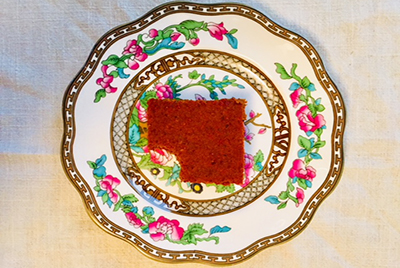 |
Turmeric has many wonderful health benefits, this recipe incorporates it in a healthy sugar free and gluten free pumpkin spice cake recipe. The turmeric flavour is subtle and adds a warm earthiness which compliments the other more traditional fall spices in this recipe.
Baking with extra virgin olive oil because is a pretty healthy fat option, but feel free to substitute with any oil you prefer. Melted butter would work well too.
Baking with oat flour is also more nutritious than white four, higher in protein, and provides longer lasting energy. You can make oat flour at home in a food processor. It just takes two minutes and then you have a supply on hand in the pantry for all your baking projects. Ready made oat flour is also available from Amazon if you prefer to skip that step. You could also substitute whole wheat flour as an alternative.
Ingredients:
Instructions:
In a large mixing bowl add olive oil, date paste, eggs, turmeric, cinnamon, nutmeg, cloves, vanilla, and stir until combined. In a separate bowl mix oat flour and baking powder to combine, then add that to the wet mixture and stir until combined. Pour mixture into a greased 9 x 13 inch baking pan. Bake at 350 degrees Fahrenheit for 45 minutes. Cool before cutting into squares. Makes 12 generous portions.
Recipe courtesy of DatePasteRecipes.com.
Use our online appointment request form to find the best time for you. We're always excited to meet new smiles and to catch up with familiar ones too.
REQUEST AN APPOINTMENTHave a question? Looking for a follow up? Call us, email us, or fill our our online contact form. Magathan Dental is here to answer your questions.
ASK US A QUESTIONStay up-to-date with what's happening in our office. See what we're doing to make our office the most welcoming dental office in Edmonton.
CONNECT WITH US ONLINE